
The OneStream Application Training course equips learners with skills to manage financial consolidation, budgeting, forecasting, and reporting in a unified platform. It covers core concepts like workflows, cube views, data management, business rules, and Marketplace solutions. Through practical exercises and real-world scenarios, participants gain the expertise to automate financial processes, integrate data seamlessly, and deliver accurate, timely insights for enterprise performance management and strategic decision-making.
OneStream Application Training Interview Questions Answers - For Intermediate
1. How does OneStream handle Intercompany Eliminations?
OneStream automates intercompany eliminations by identifying and eliminating transactions between entities within the same group. Business rules can be configured to match intercompany balances and automatically create elimination entries. This ensures consolidated financial statements are accurate and comply with accounting standards without requiring extensive manual intervention.
2. What is the purpose of Transformation Rules in OneStream?
Transformation rules in OneStream map source data from ERP systems or flat files to the target dimensions in the application. They handle data conversions, account mappings, and currency translations before loading the data into cubes. By standardizing incoming data, transformation rules ensure consistency and accuracy across reporting and analysis.
3. Can you explain the purpose of Journals in OneStream?
Journals in OneStream are used to make manual adjustments to financial data during the consolidation or reporting process. They allow finance teams to record transactions such as accruals, reclassifications, or corrections. All journal entries are logged with proper audit trails, ensuring transparency and compliance with accounting policies.
4. How are Workflows validated in OneStream?
OneStream workflows include validation steps that check the completeness and accuracy of data before submission. For example, the system can validate that all entities have submitted data, intercompany accounts are balanced, and required adjustments are complete. These validations help ensure only accurate and approved data moves forward in the financial close process.
5. What is the role of Data Sources in OneStream?
Data sources define where the application retrieves financial and operational data. These could include ERP systems, data warehouses, or flat files. By configuring data sources, organizations ensure seamless integration between OneStream and external systems, enabling real-time or scheduled data loads with minimal manual effort.
6. How does OneStream support Budgeting and Forecasting?
OneStream integrates budgeting and forecasting into the same platform used for consolidations and reporting. It provides built-in templates, driver-based modeling, and scenario analysis tools to create dynamic budgets and forecasts. This unified approach reduces data duplication, improves collaboration, and ensures financial plans align with actual performance.
7. What are XFBR Rules in OneStream?
XFBR (Extensible Finance Business Rules) are specialized scripts in OneStream that allow complex calculations and logic to run within financial workflows. They can be applied to tasks like allocations, currency translations, or intercompany reconciliations. XFBR rules provide greater control and customization over financial processes.
8. How is Data Validation performed in OneStream?
Data validation in OneStream involves setting up rules that check for errors, missing information, or out-of-balance conditions. These validations can run automatically during data loading or workflow submission. By enforcing data quality controls, OneStream ensures financial statements are reliable and free from discrepancies.
9. What is a Consolidation Cube, and how does it differ from a Planning Cube?
A consolidation cube stores actual financial data used for reporting and compliance, while a planning cube holds forecasted or budgeted data for analysis and decision-making. Although both use similar structures, consolidation cubes focus on historical accuracy, whereas planning cubes support forward-looking modeling and scenario planning.
10. How does OneStream handle Currency Translations?
OneStream automates currency translation using predefined exchange rates stored in the application. During consolidation, the system converts local currency data into the reporting currency using business rules. This ensures financial results are comparable across entities operating in different countries and currencies.
11. What is a Data Management Step, and how is it used?
A data management step in OneStream defines a specific action, such as loading data, running calculations, or exporting reports. Multiple steps can be combined into a data management sequence to automate complex workflows. This feature reduces manual effort and improves process efficiency.
12. How does OneStream support Rolling Forecasts?
OneStream supports rolling forecasts by allowing organizations to continuously update projections based on actual performance and new business assumptions. Instead of static annual budgets, rolling forecasts extend future projections by adding new forecast periods as time progresses. This helps organizations stay agile and adapt to changing market conditions.
13. What is the purpose of Drill-Through functionality in OneStream?
Drill-through functionality allows users to navigate from summarized financial data in OneStream back to the transaction-level details in source systems. This transparency helps users investigate variances, validate results, and gain confidence in the accuracy of financial reports.
14. How are Templates used in OneStream?
Templates in OneStream provide predefined structures for reports, dashboards, and planning forms. By reusing templates, organizations ensure consistency in design, reduce development time, and maintain standardization across financial reports and analysis tools.
15. What are some common Marketplace Solutions used in OneStream implementations?
Popular Marketplace Solutions include Account Reconciliations, People Planning, CapEx Planning, and Cash Flow Reporting. These prebuilt modules extend the platform's capabilities without requiring heavy customization, allowing organizations to quickly deploy new functionality and reduce implementation costs.
OneStream Application Training Interview Questions Answers - For Advanced
1. How does OneStream handle hybrid scenarios combining financial consolidation, planning, and operational analytics?
OneStream handles hybrid scenarios by leveraging its unified platform architecture where financial consolidation, planning, and analytics coexist seamlessly within a single application. Unlike legacy systems requiring separate tools, OneStream uses extensible dimensionality to share metadata across processes while allowing each functional area—such as actuals, budgets, forecasts, and operational KPIs—to maintain unique requirements. Planning cubes can source data directly from consolidation cubes, enabling financial and operational insights without redundant data movement. Real-time dashboards integrate both financial metrics and operational drivers, such as production volumes or sales pipelines, allowing leadership teams to evaluate performance holistically. This convergence reduces data silos, accelerates decision-making, and aligns financial outcomes with operational realities.
2. Explain the architecture and benefits of a single-instance, multi-tenant OneStream deployment.
In a single-instance, multi-tenant OneStream deployment, multiple business units or subsidiaries share the same application instance but maintain separate, secure data partitions. This architecture centralizes administration, metadata management, and integration processes while ensuring tenant-level data security and privacy. Each business unit can run independent workflows, consolidation cycles, or planning processes while adhering to corporate standards. Shared metadata, transformation rules, and Marketplace solutions reduce duplication, lower maintenance costs, and standardize reporting structures. At the same time, corporate teams benefit from consolidated visibility across tenants, simplifying global governance and accelerating enterprise-wide financial close and planning processes.
3. How does OneStream ensure data quality when integrating non-financial metrics into financial models?
OneStream ensures data quality for non-financial metrics through transformation rules, validation logic, and workflow approvals embedded into the data integration process. When importing operational KPIs—such as production capacity, headcount, or customer satisfaction scores—transformation rules map source data to standard dimensions and enforce consistency with financial data structures. Data validation checks identify outliers or missing values, preventing inaccurate metrics from entering consolidation or planning cubes. Workflow approvals require stakeholders to review and sign off on operational data before it impacts financial models, while drill-back capabilities allow analysts to trace anomalies to source systems. This integrated approach guarantees reliable, audit-ready metrics for performance analysis.
4. How can OneStream manage parallel financial close processes across different regions?
OneStream manages parallel financial close processes through workflow partitioning, regional hierarchies, and role-based security. Each region can execute independent close cycles with localized workflows, data validations, and intercompany reconciliations. Data units segregate regional datasets, allowing simultaneous processing without impacting corporate consolidation timelines. Regional submissions feed into corporate-level cubes automatically, where consolidated financial statements are generated. Role-based security ensures that regional users access only their respective workflows and reports, while corporate users maintain visibility across all regions. This approach shortens overall close timelines, accommodates time zone differences, and supports decentralized finance operating models.
5. How are advanced allocation models implemented in OneStream for cost and revenue planning?
Advanced allocation models in OneStream are implemented using business rules and driver-based logic to distribute costs and revenues across dimensions such as departments, products, or regions. Allocations can be based on metrics like headcount, square footage, or revenue percentages, ensuring fair and transparent expense distribution. Multi-step allocations support complex scenarios where costs flow across multiple layers before reaching final cost centers or products. XFBR rules enable reusable allocation logic, while data management sequences automate recurring allocation processes across scenarios such as budgets, forecasts, and actuals. This flexibility ensures allocations align with organizational policies and planning methodologies.
6. Describe OneStream’s approach to handling historical restatements in financial data.
OneStream handles historical restatements using scenario and time dimensions combined with journal adjustments and version control. When prior-period financial statements require restatement—due to acquisitions, policy changes, or error corrections—journal entries can be posted directly to affected periods without altering original data submissions. Scenario members, such as “Restated Actuals,” preserve both original and restated values for comparison and audit purposes. Consolidation rules automatically recalculate affected periods, ensuring accurate roll-ups to corporate-level reporting. The audit trail captures all restatement activities, providing full transparency for auditors and regulatory compliance.
7. How does OneStream handle large-scale intercompany reconciliation across hundreds of entities?
OneStream automates large-scale intercompany reconciliation by integrating matching rules, workflow controls, and real-time reporting into the financial close process. Matching rules compare intercompany balances across entities, flagging mismatches for review. Workflows enforce deadlines for data submission, validation, and dispute resolution before consolidation occurs. Dashboards provide real-time visibility into reconciliation status, enabling corporate teams to monitor unresolved mismatches proactively. Automation reduces manual reconciliations, accelerates close timelines, and ensures compliance with accounting standards like IFRS and US GAAP for intercompany transactions.
8. Explain how OneStream can manage scenario modeling for economic uncertainty and stress testing.
OneStream enables scenario modeling for economic uncertainty through its ability to create multiple forecast scenarios—such as baseline, optimistic, and pessimistic—within the same application. Driver-based models allow rapid adjustments to assumptions like sales growth, inflation rates, or interest expenses, automatically recalculating financial outcomes across the organization. Stress testing applies extreme assumptions, such as revenue declines or cost surges, to evaluate liquidity, profitability, and solvency under adverse conditions. Dashboards visualize scenario comparisons, while integration with predictive analytics tools enhances forecasting accuracy. This capability equips leadership teams with actionable insights for risk mitigation and contingency planning.
9. How can OneStream support ESG (Environmental, Social, Governance) reporting requirements?
OneStream supports ESG reporting by integrating non-financial sustainability metrics with financial data structures, enabling unified corporate reporting. Custom dimensions capture ESG metrics such as carbon emissions, diversity ratios, or compliance scores, while transformation rules standardize data from multiple operational systems. Workflow approvals ensure ESG data accuracy before inclusion in consolidated reports, and dashboards present ESG KPIs alongside financial metrics for holistic performance analysis. Marketplace solutions or custom business rules can automate ESG score calculations, enabling organizations to comply with frameworks like GRI, SASB, or CSRD while maintaining transparency and auditability.
10. How does OneStream enable predictive cash flow forecasting?
Predictive cash flow forecasting in OneStream combines historical financial data, driver-based assumptions, and advanced analytics to project future liquidity positions. Cash inflows and outflows are modeled based on accounts receivable trends, payment schedules, and expense drivers. Integration with predictive analytics tools enables machine learning algorithms to identify patterns and improve forecast accuracy over time. Rolling forecasts update cash flow projections dynamically as actual data becomes available, ensuring real-time visibility into liquidity risks and funding requirements. Dashboards visualize forecasts by period, currency, or business unit, enabling treasury teams to make proactive funding and investment decisions.
11. How does OneStream support multiple consolidation methods like full, proportional, and equity?
OneStream supports multiple consolidation methods by allowing configurable ownership structures and consolidation rules for each entity. Full consolidation applies 100% of subsidiary results to the parent company, while proportional consolidation incorporates results based on ownership percentages. The equity method records only the parent’s share of net income and equity changes without fully consolidating assets and liabilities. Business rules automate these calculations based on ownership metadata, ensuring compliance with accounting standards such as IFRS and US GAAP. The system also supports historical ownership changes, enabling accurate restatements and multi-period reporting.
12. How are rolling forecasts automated in OneStream for continuous planning?
Rolling forecasts in OneStream are automated using data management sequences, driver-based models, and workflow scheduling. As each actual period closes, new forecast periods automatically open, updating projections for the next 12 or 18 months. Driver-based assumptions, such as sales growth rates or cost per unit, recalculate forecasted financial statements dynamically. Integration with ERP systems ensures actual results feed directly into planning cubes, minimizing manual data entry. Dashboards display real-time comparisons between forecasts, budgets, and actuals, enabling agile decision-making in rapidly changing business environments.
13. Explain how OneStream manages multi-currency reporting in highly volatile FX environments.
OneStream manages multi-currency reporting by storing exchange rates in dedicated rate tables and applying currency translation rules during consolidations. Historical, average, and closing rates can be configured for income statements, balance sheets, and cash flow reporting, respectively. In volatile FX environments, sensitivity analysis allows organizations to model currency fluctuations’ impact on financial results. Scenario modeling enables forecasting under different exchange rate assumptions, while dashboards provide real-time visibility into currency exposure and translation impacts. Automated processes ensure compliance with accounting standards like ASC 830 or IAS 21 for foreign currency reporting.
14. How can OneStream integrate with advanced analytics platforms like Power BI or Tableau?
OneStream integrates with analytics platforms like Power BI or Tableau using APIs, data export utilities, or direct connectors. Financial and operational data stored in OneStream cubes can be published to data warehouses or analytics layers, where visualization tools consume it for advanced reporting. Automated data refresh schedules ensure that dashboards in Power BI or Tableau always display the latest consolidated results or forecasts. At the same time, drill-back capabilities in OneStream maintain audit trails, enabling users to investigate underlying data points without leaving the analytics environment.
15. How does OneStream support governance in large-scale deployments with multiple administrators?
OneStream supports governance through role-based security, workflow segregation, and metadata version control, ensuring collaboration among multiple administrators without compromising system integrity. Different administrative roles—such as metadata manager, security administrator, or workflow designer—can be assigned to specialized users with limited, role-specific permissions. Workflow approvals prevent unauthorized changes to key processes, while metadata versioning ensures that application structures can be rolled back if errors occur. Audit trails log every administrative change, providing transparency for internal controls, compliance audits, and IT governance frameworks like COBIT or SOX.
Course Schedule
| Nov, 2025 | Weekdays | Mon-Fri | Enquire Now |
| Weekend | Sat-Sun | Enquire Now | |
| Dec, 2025 | Weekdays | Mon-Fri | Enquire Now |
| Weekend | Sat-Sun | Enquire Now |
Related Courses
Related Articles
Related Interview
Related FAQ's
- Instructor-led Live Online Interactive Training
- Project Based Customized Learning
- Fast Track Training Program
- Self-paced learning
- In one-on-one training, you have the flexibility to choose the days, timings, and duration according to your preferences.
- We create a personalized training calendar based on your chosen schedule.
- Complete Live Online Interactive Training of the Course
- After Training Recorded Videos
- Session-wise Learning Material and notes for lifetime
- Practical & Assignments exercises
- Global Course Completion Certificate
- 24x7 after Training Support

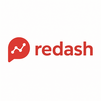
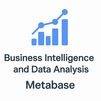
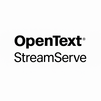
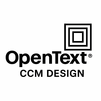
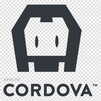

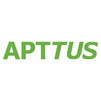

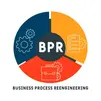




 Join our Live Instructor-Led online classes delivered by industry experts
Join our Live Instructor-Led online classes delivered by industry experts